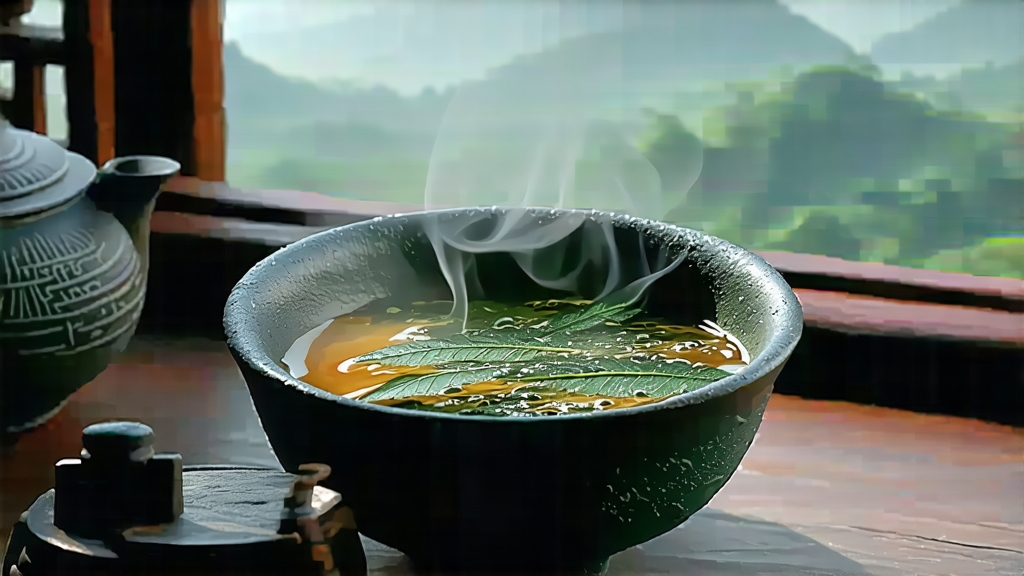
Few leaves in the world carry as much legend, craftsmanship, and aromatic paradox as Tie Guan Yin, the “Iron Goddess of Mercy” from southern Fujian’s Anxi County. To the uninitiated, it is simply another Chinese oolong; to the devotee, it is a living sonnet that balances green freshness with roasted depth, floral lift with mineral gravity. This essay invites the international reader to walk the entire arc of Tie Guan Yin—from mythic origins to the microscopic decisions that shape its cup—so that when you next lift a porcelain gaiwan, you will taste not only tea but centuries of dialogue between soil, climate, skill, and imagination.
Origin stories swirl like mountain mist. The most beloved dates to the Yongzheng era (1723–1735), when a poor farmer named Wei Yin found a deserted iron statue of Guan Yin, the Bodhisattva of Compassion, near a cave in Xiping village. He carried the heavy icon home, cleaned it daily, and offered incense. One night in a dream the goddess guided him to a hidden shrub whose leaves shimmered like emerald coins. He planted the cutting in his field, nurtured it, and from its first harvest the village was perfumed with an orchid aroma so haunting that neighbors believed mercy itself had taken vegetal form. Wei shared cuttings; the cultivar spread throughout Anxi’s granite valleys, acquiring the name “Tie Guan Yin” to honor both the iron icon and the goddess’s gift. While scholars debate the botanical parentage—some link it to the older Huang Jin Gui, others to Ben Shan—the myth endures because it captures the tea’s essence: grace forged in iron, delicacy carved from stone.
Anxi County, wedged between the Daiyun and Wuyi ranges, offers a crucible of contradictions perfect for oolong. Subtropical humidity collides with nightly mountain chills; iron-rich laterite soils drain quickly yet hold just enough moisture; frequent fog filters sunlight into a soft, shifting lantern. These stresses slow leaf growth, concentrating amino acids and volatile aromatics. Elevation matters: bushes above 600 m mature later, developing tighter cell structures that translate into brighter acidity and longer aftertaste. Microclimates vary so dramatically that two gardens separated by a single ridge can produce radically different cups—one lilac-sweet, the other flinty and marine—making Tie Guan Yin one of the most site-expressive teas on Earth.
Although all Tie Guan Yin belongs to Camellia sinensis var. sinensis, the tea branches into stylistic families that confuse even seasoned drinkers. The most celebrated division is between “qing xiang” (light fragrance) and “nong xiang” (heavy fragrance). Qing xiang, dominant since the 1990s, is minimally roasted; its liquor glows pale jade, releasing a soaring bouquet of gardenia, fresh almond, and honeydew. Nong xiang harks back to 1970s export recipes: repeated charcoal roasts at 120 °C layer cocoa, toasted sesame, and pipe-tobacco notes over a velvety amber body. Between these poles lie “qing nong” (medium roast), “chen xiang” (aged in bamboo for decades), and the rare “tuocha” cake pressed for Yunnan traders. Each style starts with the same leaf; the fork in the road occurs during the final 48 hours of crafting.
Plucking begins at dawn on the third or fourth day after the Qingming festival, when two leaves and a bud stand open like a swallow’s tail. Experienced pickers snap the stem with a faint click, avoiding the fingernail bruising that oxidizes edges prematurely. Leaves are carried in bamboo baskets lined with banana leaf to prevent compression heating. At the factory, the first decision is wilting: spread thinly on reed mats under the morning sun for twenty minutes, turned every five to ensure even UV exposure. Solar wilting initiates enzymatic activity, breaking down grassy hexanals into floral linalool precursors. When the leaf edges feel like damp silk, it is rushed indoors for “cooling green,” a resting phase where fans blow ambient air across the mats, lowering temperature and locking in fragrance.
The soul of Tie Guan Yin emerges during “yao qing”—the shaken green. Thirty kilograms of leaves are loaded into a cylindrical bamboo drum that rotates at 18 rpm for three minutes, then rests for two, repeating eight cycles. Gentle bruising ruptures cell walls just enough to let polyphenols meet polyphenol oxidase, but not so violently